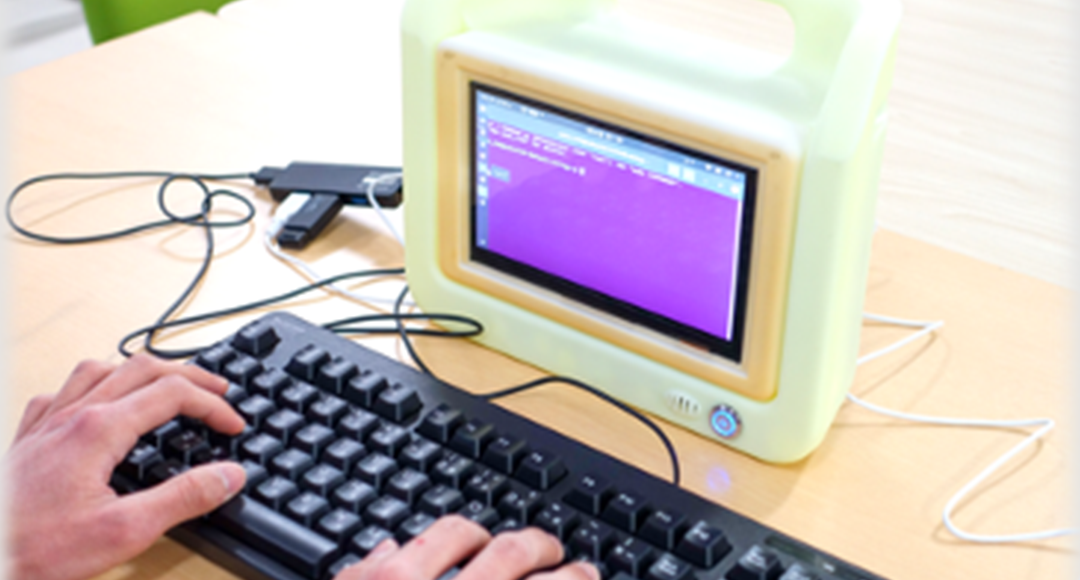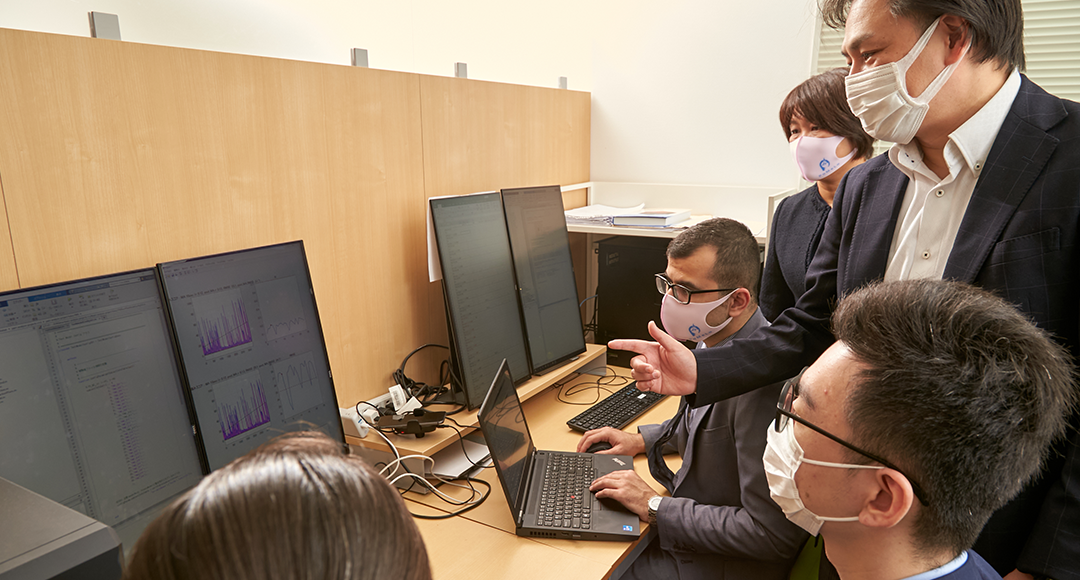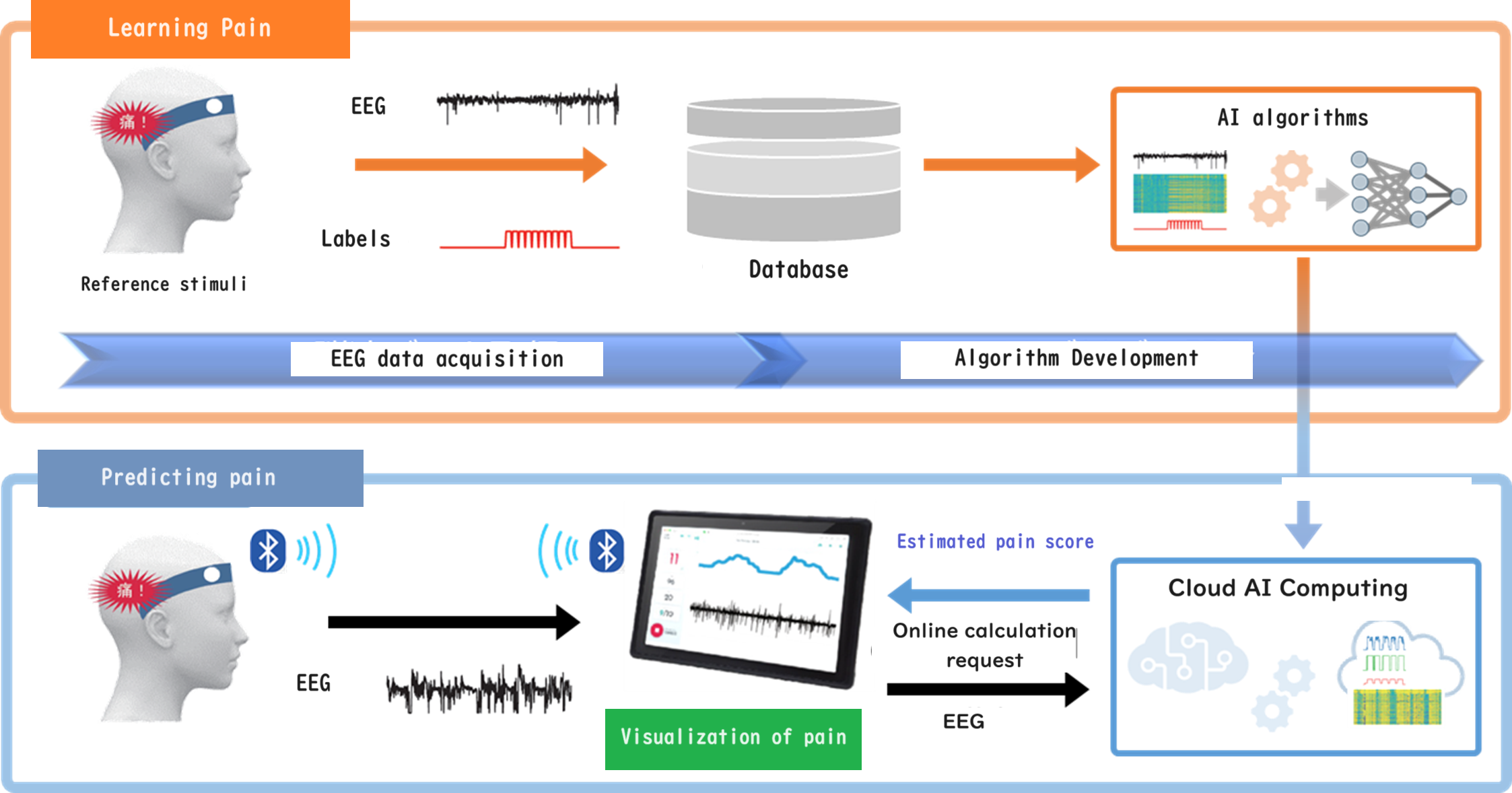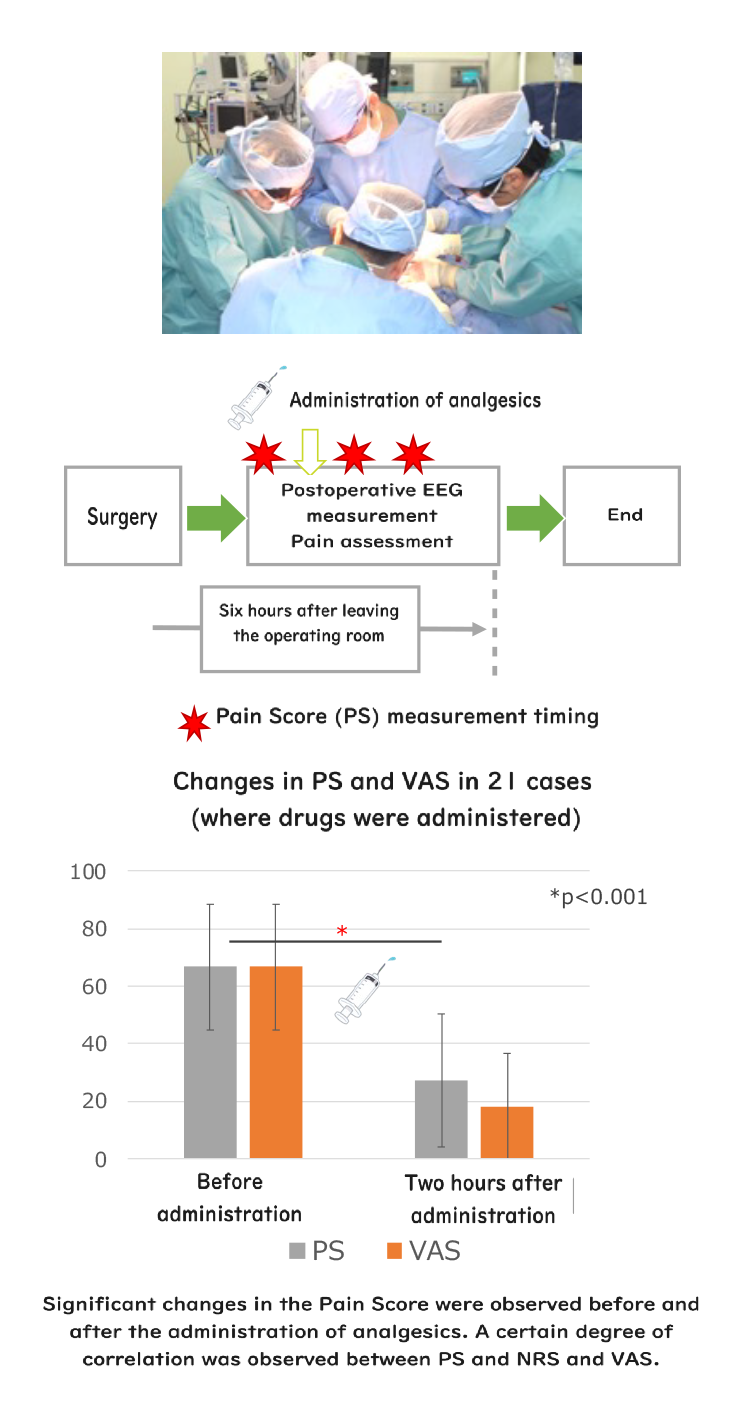There is no way to measure pain using the same indicators for people
all over the world as there are for vision or hearing tests.
The only way to determine a patient's pain is to ask them directly
about their pain, which currently relies on their own self-report.
Therefore, patients who are hypersensitive to pain and patients
who are more patient may express their pain differently,
even if they feel the same amount of pain. In such a situation,
people who truly need treatment may be missed.

The device we are developing can be described as an 'automatic pain assessment system', as it can determine and assess whether they are feeling pain or not without any action from the patient. This is the world's first automatic pain evaluation system using EEG.

Our aim is to develop a pain visualization device that can be used in large facilities such as general hospitals without any burden and that is also small enough to be introduced into clinics. While learning about equipment that can be easily spread throughout the medical field, we are developing a device that is less stressful for both patients and medical staff, referring to small electroencephalographs that are easy to put on and take off.

The more data our instruments measure, the more accurate the assessment of pain can be. To further improve accuracy, we are researching algorithms for the application of the data we collect.

To visualize pain in a way that is easy for anyone to understand and without placing a burden on patients,
using an electroencephalograph, a technology that captures signals from the brain,
we developed a system to objectively evaluate pain and succeeded in making pain visible.


